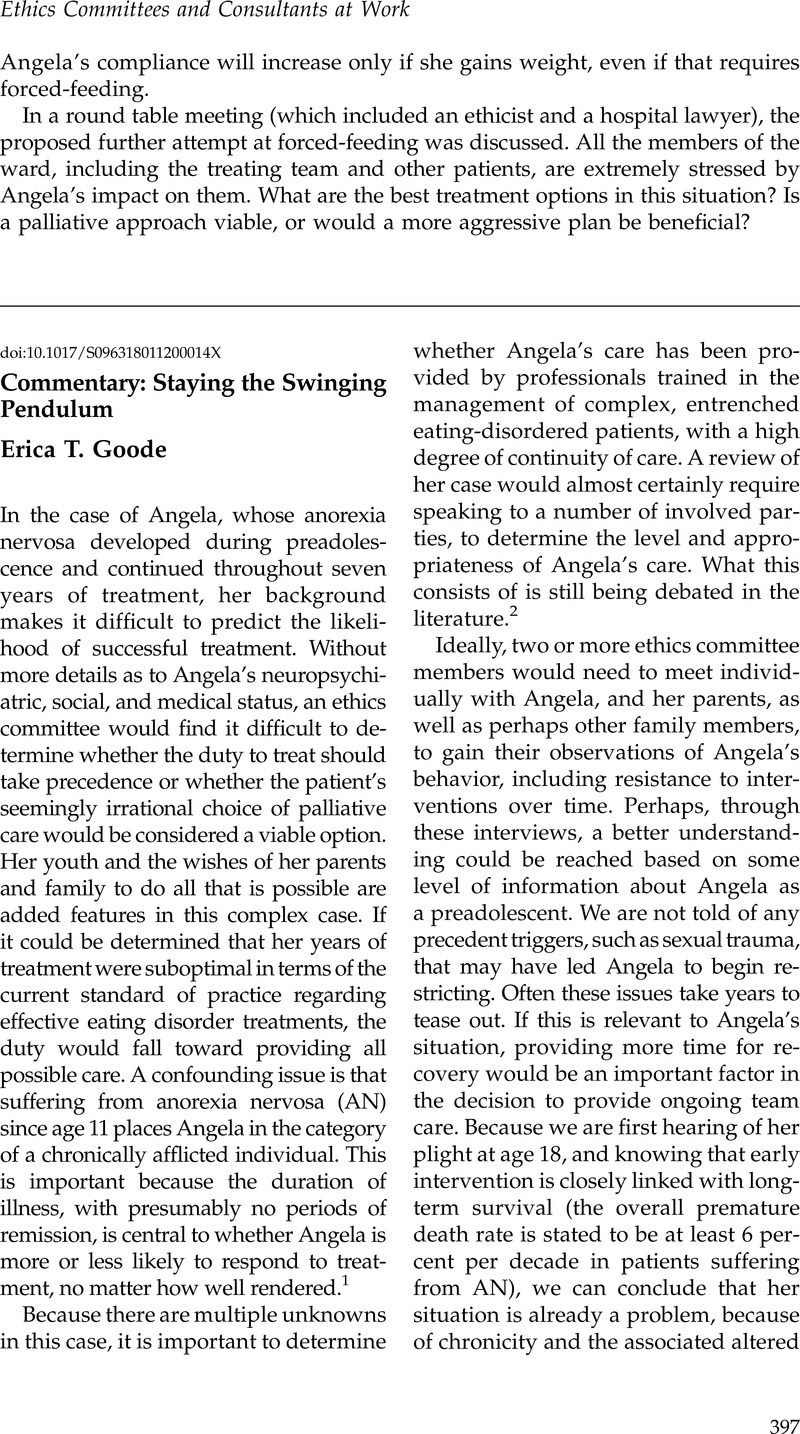Article contents
Commentary: Staying the Swinging Pendulum
Published online by Cambridge University Press: 25 May 2012
Abstract

- Type
- Ethics Committees and Consultants at Work
- Information
- Copyright
- Copyright © Cambridge University Press 2012
References
Notes
1. Fairbairn, CG.Evidence-based treatment of anorexia nervosa. Internationl Journal of Eating Disorders 2005;37:S 26–30.Google Scholar
2. See note 1, Fairbairn 2005.
3. Sullivan, PF.Mortality in anorexia nervosa. American Journal of Psychiatry 1995;152:1043–79.Google ScholarPubMed
4. Striegel-Moore, RH.Risk factors for binge eating disorders: An exploratory study. Internationl Journal of Eating Disorders 2007;40:481–7.CrossRefGoogle ScholarPubMed
5. Bulik, C, Sullivan, PF, Fear, J, Pickering, A. Predictors of the development of bulimia nervosa in women with anorexia nervosa. Journal of Nervous and Mental Disorders 1997;185:704–12.CrossRefGoogle ScholarPubMed
6. Agras, WS, ed. The Oxford Book of Eating Disorders. Oxford: Oxford University Press; 2010, at 499.Google Scholar
7. See note 1, Fairbairn 2005.
8. Kotler, L, Cohen, P, Davies, M, Pine, D, Walsh, B. Longitudinal relationships between childhood, adolescent, and adult eating disorders. Journal of the American Academy of Child and Adolescent Psychiatry 2001;40:1434–9.CrossRefGoogle ScholarPubMed
9. Castro-Fornieles, J, Gual, P, et al. . Self-oriented perfectionism in eating disorders. International Journal of Eating Disorders 2007;40:562–8.CrossRefGoogle ScholarPubMed This article covers reliable testing for eating disorders, including the CAPS (child adolescent perfectionism scale), EDI (eating disorders inventory), and EAT (eating attitudes test), showing that self-oriented perfectionism was found, in several studies, to be in 17.6% of eating disorder patients at 2.0 SD above the norm for young women with no known eating disorders. These scores were also significant predictors of future issues with eating disorders. Post-therapy scores, in those with eating disorders, after treatment, are a strong predictor of future issues with an eating disorder and other compulsive behaviors.
10. Halmi, K. Physiology of anorexia nervosa and bulimia nervosa. In: Fairburn, CG, Brownell, KD, eds. Eating Disorders and Obesity. 2nd ed. New York: Guilford Press; 2002:267–8.Google Scholar
11. See note 6, Agras 2010.
12. See note 8, Kotler, Cohen 2001.
- 2
- Cited by


